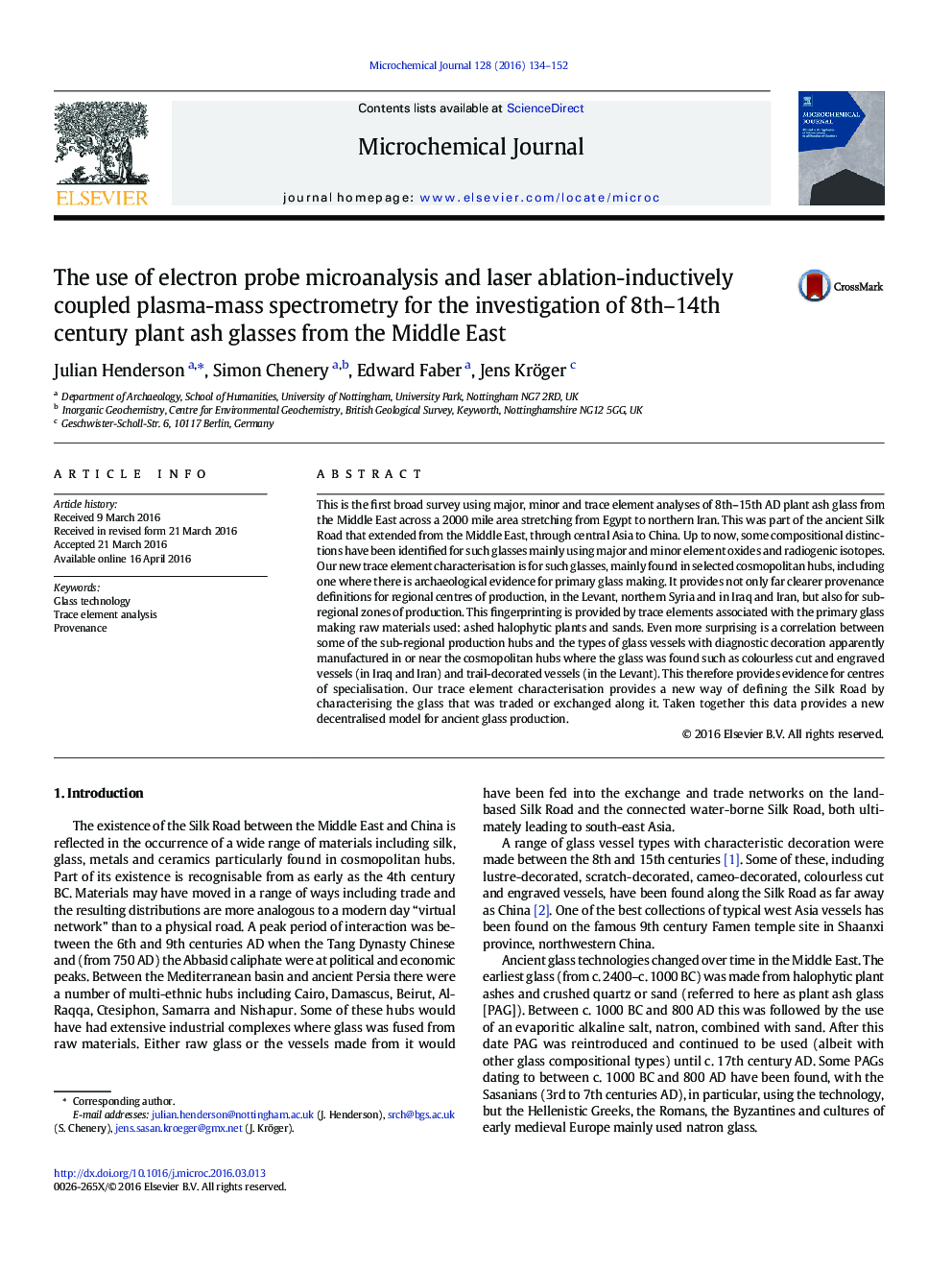| کد مقاله | کد نشریه | سال انتشار | مقاله انگلیسی | نسخه تمام متن |
|---|---|---|---|---|
| 1227552 | 1494866 | 2016 | 19 صفحه PDF | دانلود رایگان |

• Trace element fingerprinting provides the first glass provenance in an area stretching from Egypt to northern Iran.
• First clear analytical evidence for regional and sub-regional production zones for 8th-15th century AD plant ash glass.
• Evidence of trade or exchange along the Silk Road, creating a new way of defining it.
• First locational evidence for specialisation in the production of early Islamic vessel types.
• The results provide the basis for a new decentralised ancient glass production model.
This is the first broad survey using major, minor and trace element analyses of 8th–15th AD plant ash glass from the Middle East across a 2000 mile area stretching from Egypt to northern Iran. This was part of the ancient Silk Road that extended from the Middle East, through central Asia to China. Up to now, some compositional distinctions have been identified for such glasses mainly using major and minor element oxides and radiogenic isotopes. Our new trace element characterisation is for such glasses, mainly found in selected cosmopolitan hubs, including one where there is archaeological evidence for primary glass making. It provides not only far clearer provenance definitions for regional centres of production, in the Levant, northern Syria and in Iraq and Iran, but also for sub-regional zones of production. This fingerprinting is provided by trace elements associated with the primary glass making raw materials used: ashed halophytic plants and sands. Even more surprising is a correlation between some of the sub-regional production hubs and the types of glass vessels with diagnostic decoration apparently manufactured in or near the cosmopolitan hubs where the glass was found such as colourless cut and engraved vessels (in Iraq and Iran) and trail-decorated vessels (in the Levant). This therefore provides evidence for centres of specialisation. Our trace element characterisation provides a new way of defining the Silk Road by characterising the glass that was traded or exchanged along it. Taken together this data provides a new decentralised model for ancient glass production.
Journal: Microchemical Journal - Volume 128, September 2016, Pages 134–152